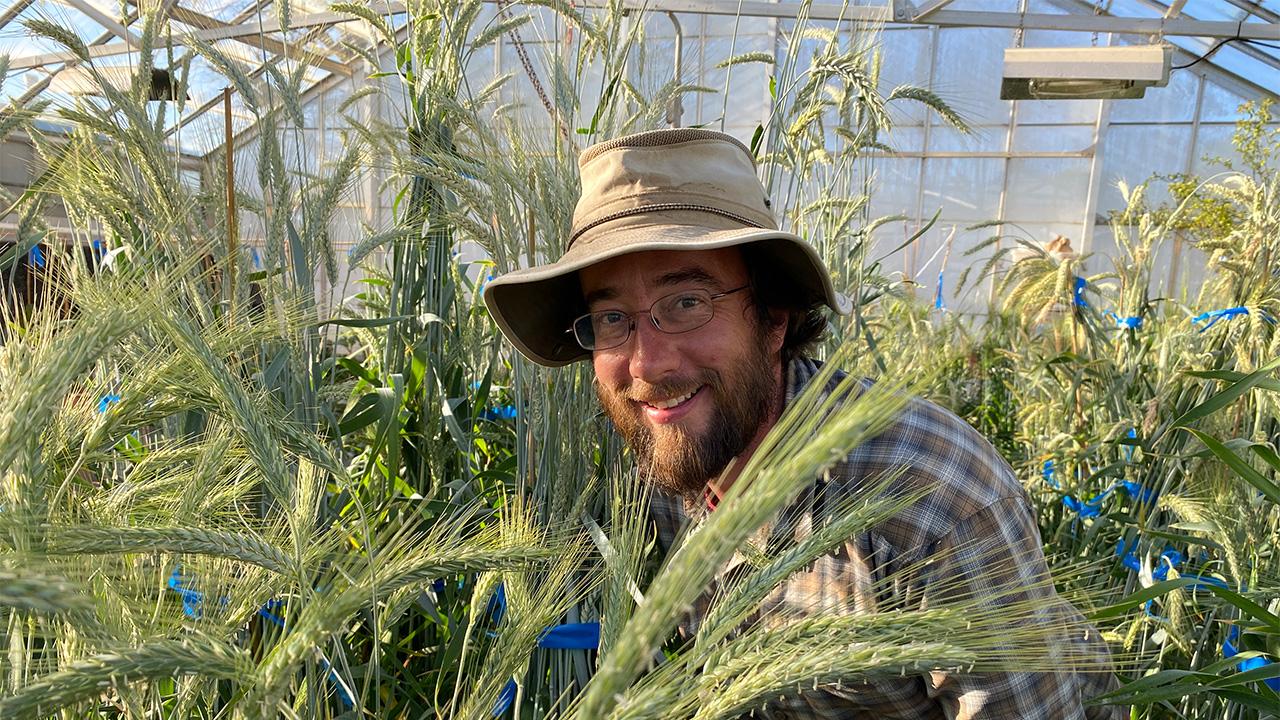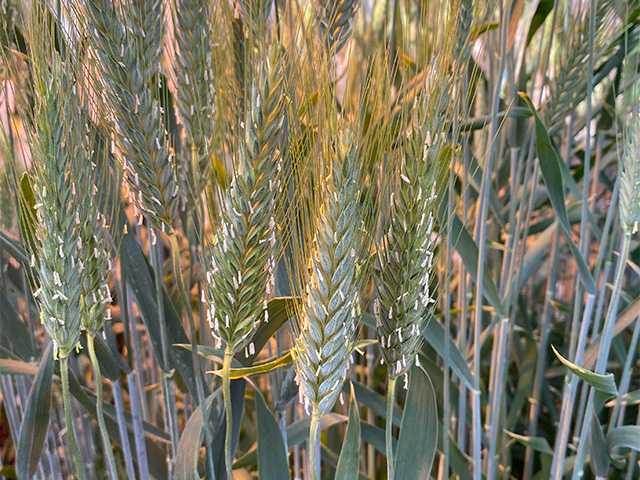
Triticale to rise in the world of baked deliciousness
Hegarty team lands AFRI grant to improve bread-making qualities
Craft bakers love adding a little triticale to breads for its subtle blend of nutty and earthy flavors and its moist, slightly chewy texture. Farmers love the grain mainly for forage: It produces bigger yields with less water and fertilizer compared to wheat. Now, Joshua Hegarty and colleagues across the country will work on combining those qualities to create new varieties of triticale that are good for bread-baking at commercial scale, and still offer good value for growers.
The Agriculture and Food Research Initiative, part of the United States Department of Agriculture, has funded Hegarty’s research with a grant of $800,000 over the next four years. AFRI announced the grant today with the aim of developing new cultivars of bread-quality triticale as a higher-yield, lower-cost addition to wheat for baking
“We are doing this work in cultivars that already are well-adapted to many of the most important grain-growing regions in the world,” said Hegarty, a project scientist in the UC Davis Department of Plant Sciences working in the lab of Jorge Dubcovsky.
Triticale is a hybrid of wheat and rye, which scientists first started experimenting with in the late 1800s. The first breeding program began in the early 1950s, with the goal of creating a grain that combines needs in the field with needs in the kitchen: the yield potential and stress resilience of rye with the qualities of wheat that lead to light, high-volume, protein-rich loaves of bread.
The result has proven productive: Triticale yields 11 percent more grain per acre than wheat, and 19 percent more when grown with less fertilizer. Triticale also is rich in protein, minerals, vitamins and dietary fiber. The grain already is grown on nearly two million acres in the U.S. and 10 million acres worldwide – but nearly all is used for animal forage and feed.
Puzzling over triticale genetics

Triticale flour is too tender for widespread adoption into bread manufacturing: When triticale dough is mixed even for a short time, the gluten – the substance that gives dough its elasticity – breaks down, and the dough becomes a sticky mess. When baked, the loaf does not rise well. Both problems are common traits of its rye parent, Hegarty said.
In Ukraine, however, scientists have worked since the Soviet era to develop triticale that produces loaves with palate-pleasing volume similar to that of wheat. Yet, those varieties still lack wheat’s mixing tolerance and gluten strength. Hegarty and colleagues already have been breeding Ukrainian varieties with UC Davis triticale, and this grant allows them to continue making progress.
“We want to take the large loaf volume of the Ukrainian triticale and the mixing tolerance of what we have developed here to improve the gluten, blend it all together and, hopefully, get a triticale that approaches the bread quality of wheat,” Hegarty explained.
The team already has developed lines carrying different combinations of five wheat genes that improve mixing quality. Artisan millers and bakers are testing them now, Hegarty said. Meanwhile, the team is trying to locate the genes in the Ukrainian triticale controlling loaf volume. “This appears to be something unique in the rye part of the genome, which the Ukrainians were able to select for,” he added.
Food security for developing nations

Collaborators are contributing from institutions in Washington, Colorado, Nebraska and Maryland, testing for suitability in various grain-growing environments and, in Maryland, for tolerance to fusarium fungal infection. Another collaborator, the International Maize and Wheat Improvement Center (CIMMYT) outside Mexico City, will channel resulting varieties for testing and eventual use abroad – a boon for food security. “We plan to test those varieties in Ethiopia[TK5] and other regions where people could benefit, especially on marginal lands,” Hegarty said.
The grant also nourishes a new generation of triticale breeders at a time when planted acreage is both growing and facing risks from evolving diseases, according to George Fohner, a member of the California Grain Foundation who wrote in support of Hegarty’s project.
Hegarty is co-principal investigator and lead researcher in this grant[TK6] . He started a triticale research and breeding program at UC Davis in 2017, while still a graduate student under Dubcovsky. Hegarty’s earlier work resulted in the release of two high-yielding forage cultivars, UC-Atrea and UC-Bopak, which are licensed by UC Davis to two seed companies.
Media Resources
Trina Kleist, UC Davis Department of Plant Sciences, tkleist@ucdavis.edu, (530) 754-6148 or (530) 601-6846
